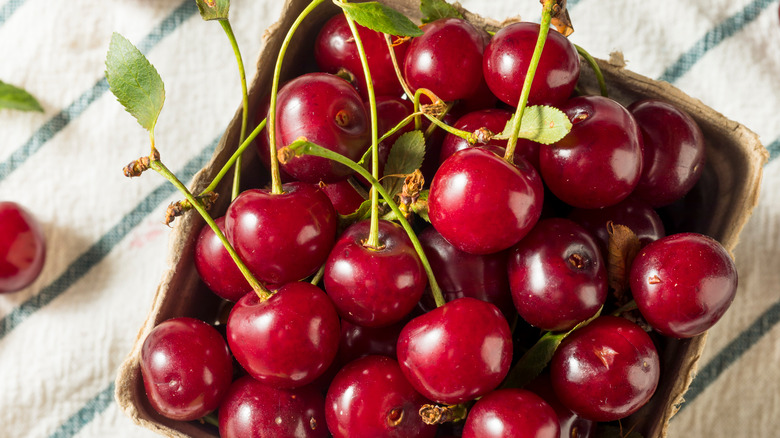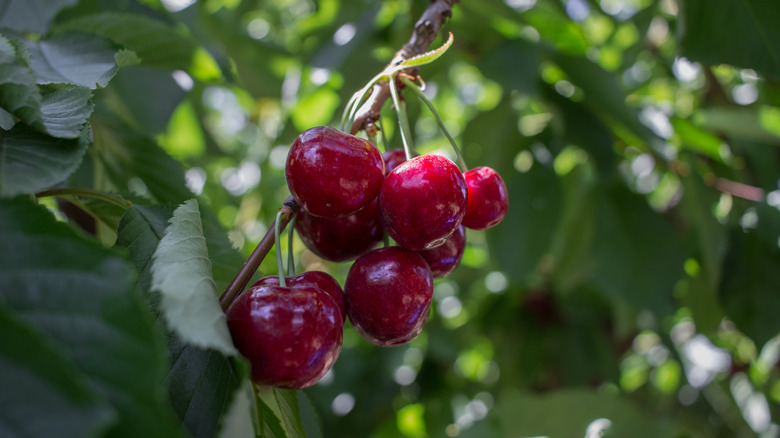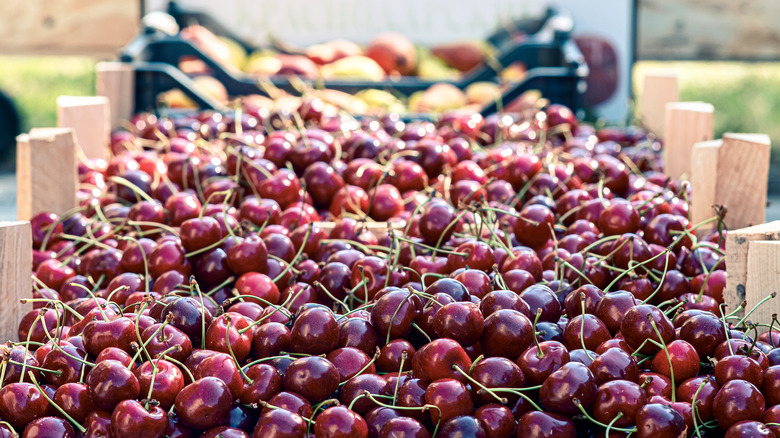How The Bing Cherry Got Its Name
Hope you brought your sweet tooth! Maraschino cherries might be a mixologist's bread and butter (or, you know what we mean), but Bing cherries are the champion of fruit-lover's hearts. Ben & Jerry's best-selling Cherry Garcia ice cream couldn't hope to exist without the Bing cherry.
Bing cherries are maroon or dark red in color, medium-to-large in size compared to other cherry varieties, and about two centimeters in diameter, per Specialty Produce. The USDA recognizes Bing cherries as a "natural health remedy" with impressive anti-inflammatory and antioxidant qualities; scientists are actively studying whether Bing cherries can even prevent cardiovascular disease and improve neurological functions. Yes, they're tasty and packed with health benefits.
But, have you ever spared a thought for where those locally sourced cherries in your dish came from? We don't just mean the tree they grew on — even further back. As it turns out, Bing cherries were named for a horticultural hero with, perhaps, an unlikely history.
Ah Bing — the foreman behind the fruit
According to Atlas Obscura, Bing cherries are named after Ah Bing, a Chinese foreman who first propagated the fruit. Although little is actually known about Ah Bing, said information comes from Florence Olsen Ledding, the stepdaughter of Bing's employer, Seth Lewelling. Lewelling and his brother founded the first fruit tree nursery on the West Coast of the continental United States, in Milwaukie, Oregon, and Ah Bing was its foreman.
In an interview with the Library of Congress, Ledding describes Ah Bing as being 6-feet tall, which visually set him apart from the 30 other employees he worked alongside on the Lewelling farm. The namesake story, she says, goes like this: During one particular incident where Seth Lewelling and Ah Bing were tending the fruit trees, they discovered the tree bearing a new, yet unseen variation of cherries. When one person on the farm suggested Lewelling name the new cherry after himself, Lewelling reportedly said, "No, I'll name this for Bing. It's a big cherry and Bing's big, and anyway it's in his row, so that shall be its name."
The legacy and future of the Bing cherry
However, Ah Bing's time on the Lewelling's farm didn't enjoy the same longevity as the cherry named after him. Ledding says that, in 1989 or 1990, while Bing was on his long-awaited return journey to China to visit his family, Bing was never able to return to Oregon (via Atlas Obscura).
In 1882, U.S. Congress passed the Chinese Exclusion Act, which heavily limited the imigration of Chinese persons into the U.S., per History. Even though Chinese immigrants only made up 0.002% of the entire U.S. population in 1882, it says, Congress ratified the act as complaints of immigrant workers "stealing" jobs began to surface in the conversations of racially motivated American workers. Even though the act had already been enacted by the time Bing returned to China, its scope became even more pronounced and restricted during his time overseas. Under the act, if Chinese immigrants left the U.S., they had to obtain new certifications in order to be allowed re-entry into the country, via the National Archives. But, Bing's legacy extends far beyond the confines of geographical borders — his name continues on in every bunch of cherries on farms and tables worldwide.


